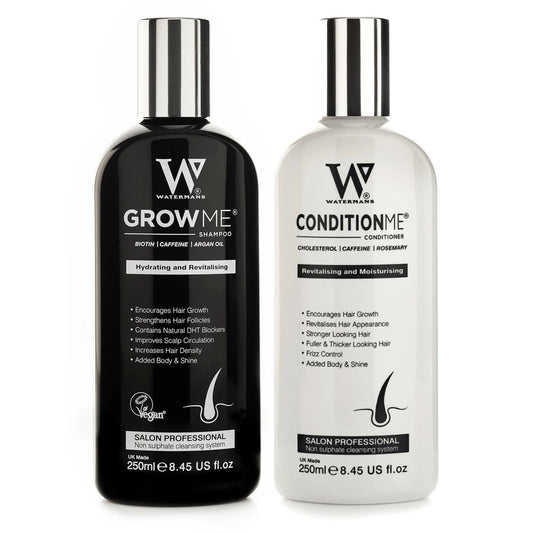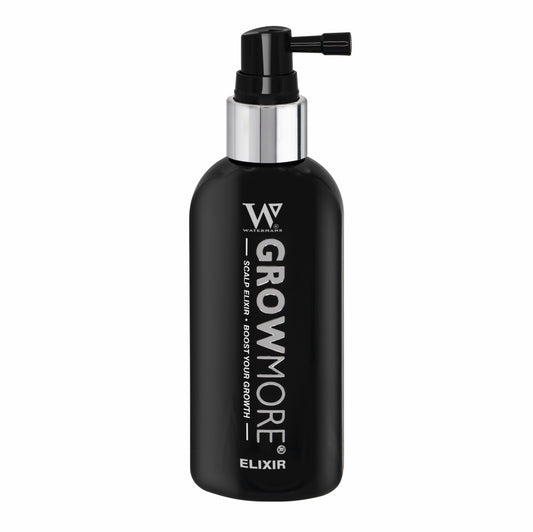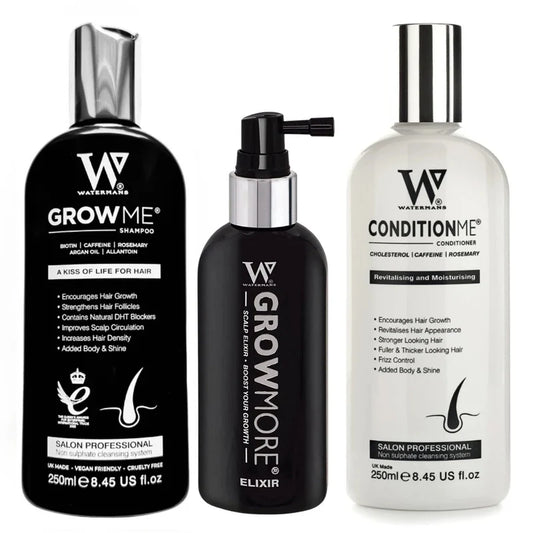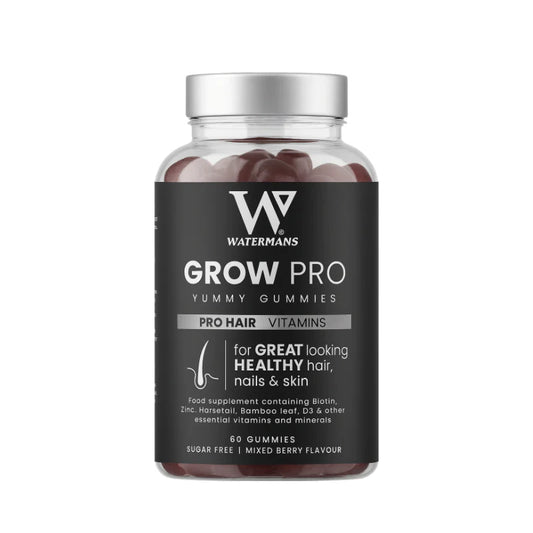Understanding Perimenopause Hair Thinning: Causes, Solutions, and Tips for Fuller Hair
Share

Perimenopause marks a change in a woman’s life. It leads to menopause, a natural step. Estrogen goes up and down. This change can make hair thin. In this article, we look at why hair thins, how to fight it, and tips to get thicker hair.
What is Perimenopause?
Perimenopause comes before menopause. It may start in your late 30s or early 40s. The ovaries make less estrogen. This shift brings signs like skipped periods, hot days, mood shifts, and hair thinning. Knowing what happens helps you meet the change in your hair.
The Biology Behind Hair Thinning
Hormones guide hair growth. Estrogen helps keep hair in the growth stage. When estrogen drops, hair moves faster to the resting stage and falls out. A rise in testosterone, which all women make, may add to hair loss. This shift can lead to thinning hair on the head.
Common Causes of Perimenopause Hair Thinning
1. Hormonal Fluctuations
Hormone levels go up and down at this time. Less estrogen can make hair weak and cause more shedding.
2. Stress
More stress comes with this stage. Stress may make hair drop more than usual.
3. Nutritional Deficiencies
Changes in appetite may arise now. A lack of iron, zinc, or biotin in your food can hurt hair strength.
4. Genetics
If women in your family lost hair in menopause, you may too. This type of hair loss is passed down in your genes.
5. Lifestyle Changes
Changes in daily life may play a part. Less exercise or a diet high in sugar or fat can worsen hair loss.
Effective Solutions for Perimenopause Hair Thinning
Though hair loss can worry you, there are ways to fight it.
1. Hair Growth Shampoos
A strong hair growth shampoo can help your hair. Watermans Grow Me Shampoo works well. Its mix of biotin, caffeine, and oils wakes up the scalp and nourishes hair growth. Find more about it on their website.
2. Nutritional Supplements
Taking nutrients that help hair, full of biotin, zinc, and omega-3 fats, can bring back key building blocks for strong hair.
3. Regular Hair Trims
A trim cuts away split ends and breakage. This care makes your hair seem fuller and sound.
4. Scalp Massage
A gentle massage on your head lifts blood flow. This touch wakes up hair roots.
5. Low-Level Laser Therapy (LLLT)
Laser devices send a soft beam that helps blood move to hair roots. This method may wake up growth.
6. Hormone Replacement Therapy (HRT)
A doctor may talk about HRT if your signs grow strong. This care may calm hormone shifts and bring back steadier hair.
7. Stress Management Techniques
Calm your body with yoga, quiet time, or exercise. A calm body may drop stress hormones and slow hair loss.
Tips for Achieving Fuller Hair
Moisturize
Wet hair stays soft and strong. Use light leave-in conditioners or hair oils that do not weigh your hair down.
Choose the Right Hair Products
Pick shampoos and conditioners that are kind to hair. Stay away from strong chemicals, sulfates, or parabens. Look for gentle and natural items.
Avoid Heat Styling
Heat tools like straighteners, curling irons, or blow dryers can hurt your hair. Use them less to keep your hair safe.
Use Dry Shampoo
Dry shampoo can lift your hair. It gives a quick boost in volume between washes.
Experiment with Haircuts
Certain cuts can make your hair look thick. Try layered styles for a fuller look.
Did You Know?
- Hair lives in a cycle with three parts: growth, rest, and loss. Hormone shifts can hurt this cycle.
- Daily stress can change your mood and make hair fall.
- Thyroid problems may also hurt hair.
- Women often face wide thinning, while men may see bald spots.
- Foods like berries, greens, and nuts help win a fight against cell wear and tear and aid hair growth.
Q&A Section
Q1: Is hair thinning during perimenopause reversible?
A1: Yes. Many times, hair can come back with the right steps and care.
Q2: Can shampoos help hair grow?
A2: Some shampoos, such as Watermans Grow Me Shampoo, carry things that help the scalp and make hair grow.
Q3: How long does it take to see help from hair shampoos?
A3: Many see a change in about 8-12 weeks of steady use.
Q4: Can changes in daily life affect hair thinning?
A4: Yes. Good daily habits help improve hair and lower shedding.
Q5: Are there vitamins that help hair grow?
A5: Vitamins A, C, D, E, zinc, iron, and especially biotin help hair.
Q6: Can stress mean permanent harm to hair?
A6: Stress loss is not set for life. It gets better when the stress lowers.
Q7: What is the best way to style thinning hair?
A7: Try layered cuts and light fibers or sprays to give a look of full hair.
Q8: Does menopause affect other hair besides the head?
A8: Mainly, it affects head hair. Changes in hormones can also change hair in other spots.
Q9: When should I see a doctor about hair loss?
A9: If you lose a lot of hair or if you see other changes in your body, check with your doctor.
Q10: Can hair and skin change at the same time in perimenopause?
A10: Yes. Changing hormones can change both hair and skin.
This guide helps you meet hair thinning in perimenopause. With these ideas, you can care for your hair and keep it thick through life’s change.



